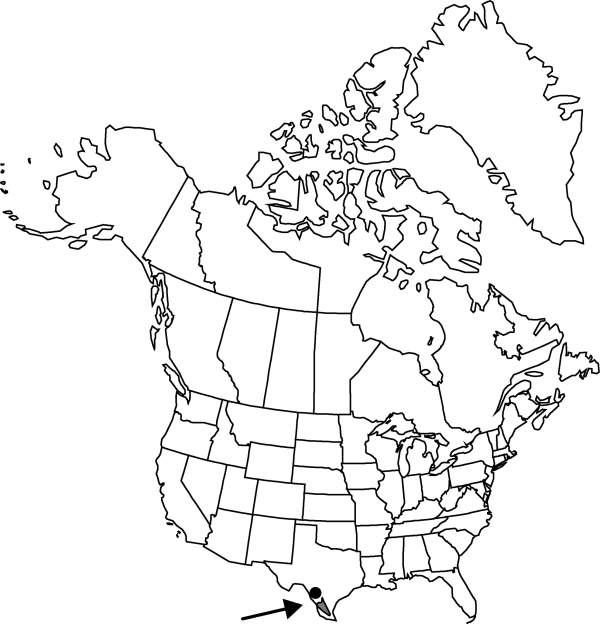Echinocereus papillosus
Cact.-Verz., 19. 1859.
Plants irregularly forming clumps at or before flowering. Stems mostly nearly erect when young, frequently decumbent in old age, cylindric, 4–15 × 2–3(–7) cm; ribs (6–)7–10, crests strongly undulate; areoles 10–15 mm apart. Spines 8–12 per areole, straight, appressed-spreading (radial spines) or projecting to appressed (central spines), white, yellow, or brown and white; radial spines 7–10 per areole, to 15 mm; central spines 1(–4) per areole, brown, terete, to 25 mm. Flowers funnelform, 7–9 × 7–12 cm; flower tube 20–30 × 10–30 mm; flower tube hairs 1 mm; inner tepals yellow, proximally orange-red to purple, 15–40 × 10–20 mm, tips relatively thin and delicate; filaments yellowish to orange-red; anthers yellow; nectar chamber 4–6 mm. Fruits green, 15–25 mm, pulp white. 2n = 22.
Phenology: Flowering early spring; fruiting 2 months after flowering.
Habitat: Open prairies with mesquite, Tamaulipan thorn scrub, alluvium, red gravel, limestone
Elevation: to 150 m
Distribution

Tex., Mexico (Nuevo León, Tamaulipas).
Discussion
Small-stemmed plants were designated as Echinocereus papillosus var. angusticeps (Clover) W. T. Marshall, reportedly endemic near Linn, Texas. The status of the proposed variety remains unresolved but appears weak; W. Blum et al. (1998) and E. F. Anderson (2001) considered the name to be a synonym of typical E. papillosus.
Selected References
None.